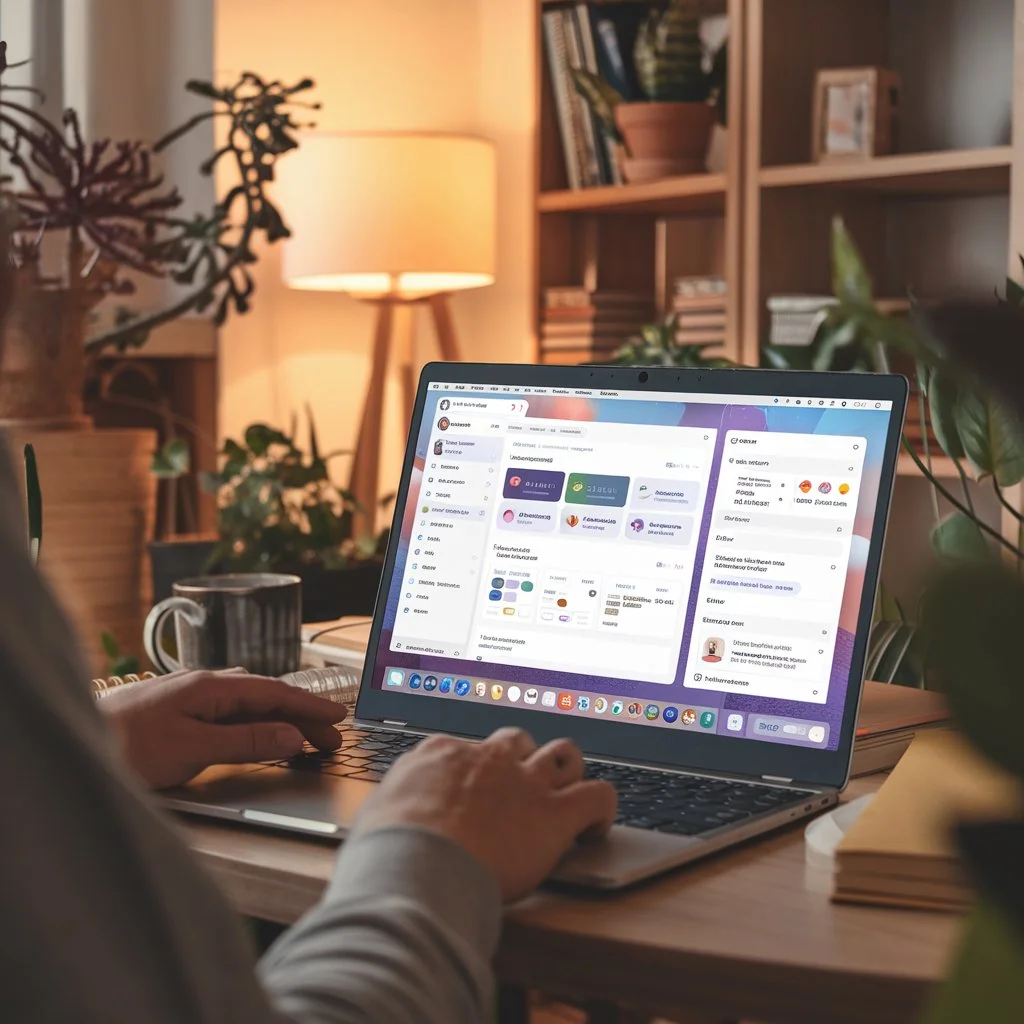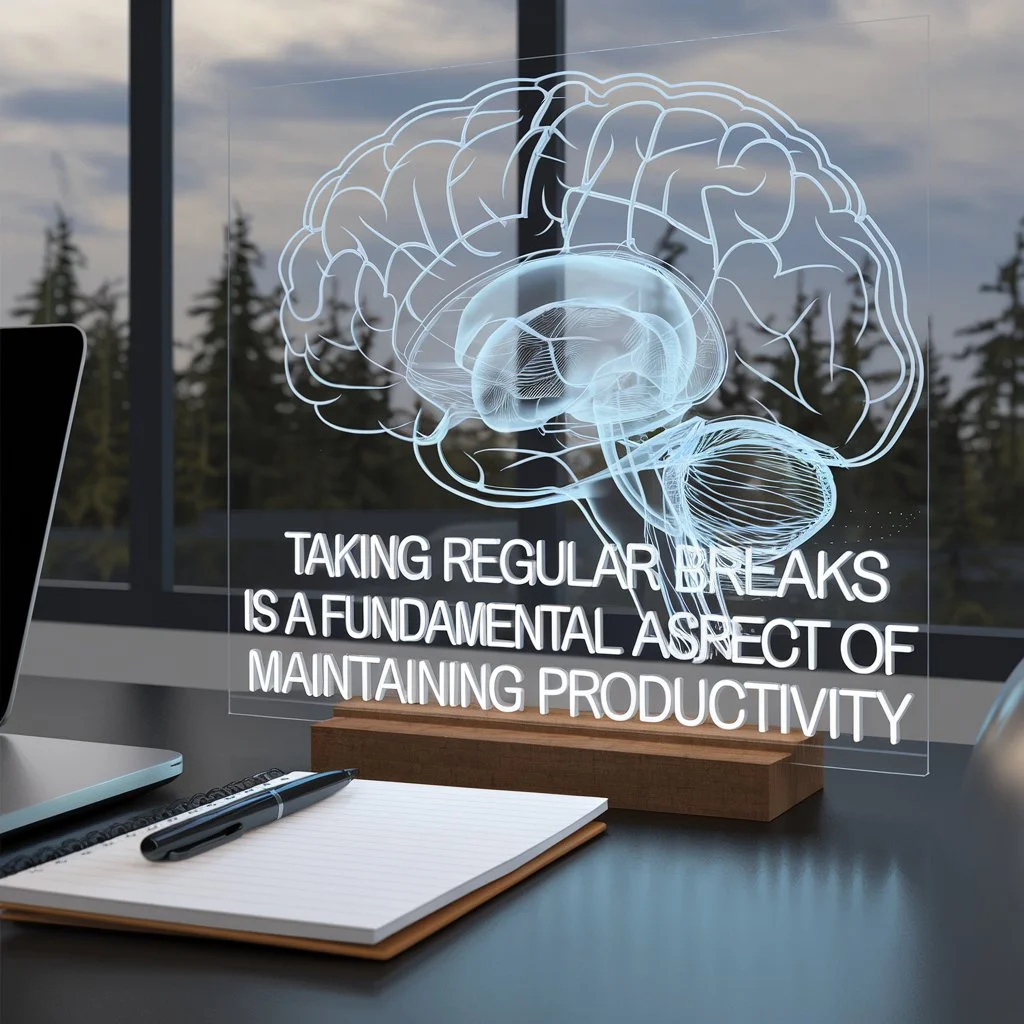In a world where remote work has become the norm, accelerated by the pandemic, many people find themselves struggling to maintain productivity amidst the comforts—and distractions—of home. It is Thursday morning, and you’re sitting at your kitchen table, coffee in hand, but instead of tackling your to-do list, you’re scrolling through social media, glancing at the laundry, and wondering how the hours slipped away. If this sounds familiar, you’re not alone.
The shift to remote work during the pandemic has brought both freedom and challenges, leaving many to navigate the fine line between personal life and professional responsibilities. As the boundaries blur, we have to find effective strategies that not only enhance our productivity but also foster well-being.
Master the Art of Time: 10 Productivity Hacks for Remote Workers provides actionable strategies designed to optimize your workday. From setting clear goals and creating a dedicated workspace to leveraging technology and building a supportive community, these “hacks” offer a comprehensive approach to reclaiming your time. When you implement these 10 productivity hacks, you will achieve more while feeling balanced and fulfilled.
Are you ready to take control of your time and increase your productivity? Let’s explore these 10 productivity hacks together.
1. Understand Your Work Environment

A well-structured work environment is foundational to productivity, especially for remote workers who may be tempted by the comforts of home. Establishing a dedicated workspace not only signals to your brain that it’s time to focus but also minimizes distractions that can derail your productivity. Whether it’s a separate office room or a designated corner of your living space, having a specific area for work can significantly enhance your concentration and efficiency.
Ergonomic Setup
Investing in ergonomic furniture is crucial for long-term comfort and productivity. Studies have shown that poor posture and inadequate workspace setups can lead to physical discomfort and decreased focus (Hedge, 2021). Consider an adjustable chair that supports your back, a desk at the right height, and a monitor positioned at eye level. Small adjustments, like using a footrest or keeping your keyboard and mouse within easy reach, can prevent strain and fatigue throughout the day.
Additionally, personalizing your workspace can foster a sense of ownership and motivation. Decorate with items that inspire you, such as plants, artwork, or motivational quotes. A vibrant and personalized environment can lift your spirits and keep you engaged in your tasks.
Minimizing Distractions
It’s important to consider the potential distractions in your home environment. Common interruptions can include household chores, family members, or even the allure of your favorite TV show. To combat this, set boundaries with those you live with, explaining your work hours and the importance of minimizing noise and interruptions.
Using noise-canceling headphones or background music can also help create a focused atmosphere. Research indicates that certain types of music, particularly instrumental or ambient sounds, can enhance concentration (Lesiuk, 2005). Establishing a designated workspace and minimizing distractions will create an environment conducive to productivity, allowing you to tackle your tasks with clarity and focus.
References
- Hedge, A. (2021). Workplace Ergonomics: A Review of Current Research. Journal of Occupational Health Psychology.
- Lesiuk, T. (2005). The Effect of Music Listening on Work Performance. Psychology of Music.
2. Set Clear Goals and Priorities

Setting clear goals and priorities is a vital component of effective remote work. Without a structured plan, it’s easy to become overwhelmed by tasks or lose sight of your most important objectives. By establishing defined goals, you not only provide yourself with direction but also create a measurable way to track your progress. This sense of purpose can be a powerful motivator, helping you stay focused and productive throughout your workday.
SMART Goals
One effective method for setting goals is the SMART criteria: Specific, Measurable, Achievable, Relevant, and Time-bound. Each element of this framework ensures that your goals are clear and attainable. For instance, instead of stating, “I want to improve my writing,” a SMART goal would be, “I will write 500 words every weekday for the next month.” This specificity provides a clear target and a timeframe, making it easier to stay accountable.
Implementing SMART goals can also enhance your overall productivity. Research shows that individuals who set specific goals are more likely to achieve them compared to those who set vague intentions (Locke & Latham, 2002). By defining your objectives clearly, you create a roadmap that guides your daily tasks, making it easier to prioritize effectively.
Prioritization Techniques
Once your goals are established, the next step is prioritization. One common method is the Eisenhower Matrix, which categorizes tasks into four quadrants based on urgency and importance. This approach helps you identify what requires immediate attention versus what can be scheduled for later. For example, tasks that are both urgent and important should be addressed first, while those that are neither can often be delegated or eliminated.
Additionally, the “ABC” prioritization method can also be effective. In this system, you label tasks as A (high priority), B (medium priority), or C (low priority). By focusing on A tasks first, you ensure that your time is spent on the most impactful activities. Prioritizing tasks not only enhances your productivity but also reduces the feeling of being overwhelmed, allowing you to approach your work with a clearer mindset.
References
- Locke, E. A., & Latham, G. P. (2002). Building a Practically Useful Theory of Goal Setting and Task Motivation: A 35-Year Odyssey. American Psychologist.
3. Utilize Time Management Techniques

Effective time management is crucial for remote workers seeking to maximize productivity while maintaining a healthy work-life balance. With the flexibility of remote work often comes the risk of losing structure, making it essential to implement proven techniques that help you stay on track. By managing your time wisely, you can enhance your focus, reduce stress, and accomplish more in less time.
The Pomodoro Technique
One popular time management method is the Pomodoro Technique, developed by Francesco Cirillo in the late 1980s. This technique involves working for 25 minutes, followed by a 5-minute break. After four “Pomodoros,” you take a longer break of 15–30 minutes. This structured approach helps maintain focus while preventing burnout. The frequent breaks allow your mind to rest and recharge, making it easier to return to your tasks with renewed energy.
Research supports the effectiveness of this technique. A study conducted by the University of Illinois found that brief diversions from a task can dramatically improve one’s ability to focus on that task for prolonged periods (Mark, Gudith, & Klocke, 2008). By incorporating the Pomodoro Technique into your work routine, you can enhance your concentration and productivity.
Time Blocking
Another effective strategy is time blocking, where you allocate specific blocks of time for different tasks throughout your day. This technique requires you to plan your day in advance and assign durations for each activity, whether it’s meetings, project work, or breaks. By visually organizing your schedule, you create a clear roadmap for your day, reducing the tendency to multitask or drift into distractions.
Time blocking can also help you identify when you are most productive. For example, if you notice that you work best in the morning, you can schedule your most challenging tasks during that time. Studies have shown that people have varying energy levels throughout the day, and aligning your tasks with your peak performance times can lead to greater efficiency (Kühn et al., 2014). By implementing time blocking, you not only manage your time better but also enhance your overall productivity.
References
- Mark, G., Gudith, D., & Klocke, U. (2008). The Cost of Interrupted Work: More Speed and Stress. Proceedings of the SIGCHI Conference on Human Factors in Computing Systems.
- Kühn, S., et al. (2014). The Influence of Circadian Rhythms on Time of Day Effects on Cognitive Performance. Chronobiology International.
4. Leverage Technology and Tools

In today’s digital age, utilizing the right technology and tools can significantly enhance your productivity as a remote worker. With a plethora of apps and software designed to streamline tasks and improve collaboration, there’s no shortage of resources available. By choosing the right tools, you can reduce friction in your workflow, stay organized, and maintain effective communication with your team.
Task Management Tools
One of the most effective categories of tools for remote workers is task management software. Applications like Trello, Asana, and Notion allow you to create to-do lists, set deadlines, and track progress on projects. These platforms offer visual representations of tasks, enabling you to break larger projects into manageable steps. This structured approach can help prevent overwhelm and ensure that nothing falls through the cracks.
Research shows that teams using project management tools experience better communication and collaboration, leading to improved productivity (Wang et al., 2016). Moreover, these tools often include features for assigning tasks, commenting, and file sharing, which can enhance accountability and streamline workflows. By integrating task management software into your routine, you can keep your projects organized and ensure that you stay on top of your responsibilities.
Communication Platforms
Effective communication is another critical aspect of remote work. Platforms like Slack, Microsoft Teams, and Zoom provide the necessary channels for team collaboration, whether through instant messaging, video conferencing, or file sharing. These tools help maintain a sense of connection, which can sometimes be lost in a remote setting.
Using communication tools effectively can reduce email overload and foster quicker decision-making. Studies indicate that organizations with strong communication practices are more productive and have higher employee satisfaction (Gallup, 2017). Regular check-ins and virtual meetings can help maintain relationships and keep everyone aligned on goals. By leveraging these communication platforms, you can enhance both collaboration and productivity within your remote team.
References
- Wang, Y., et al. (2016). The Impact of Project Management Tools on Team Performance. International Journal of Project Management.
- Gallup. (2017). State of the American Workplace.
5. Establish a Daily Routine

A well-defined daily routine is essential for maintaining productivity in a remote work environment. Unlike traditional office settings with structured hours, remote work often requires self-discipline to stay focused and efficient. By developing a consistent schedule, you can create a rhythm that helps you manage your time effectively and promotes a clear separation between work and personal life.
Structuring Your Day
To establish a productive daily routine, start by identifying your peak productivity hours. Are you most focused in the morning, or do you hit your stride later in the day? Once you know when you work best, allocate your most challenging tasks to those times. This alignment allows you to leverage your natural energy levels and maximize your output.
In addition, including regular breaks is crucial for sustaining productivity. Techniques like the Pomodoro Technique, as mentioned earlier, encourage stepping away from your desk periodically. Research has shown that short breaks can enhance cognitive performance and reduce fatigue (Ariga & Lleras, 2011). Structuring your day to include focused work sessions interspersed with breaks can lead to a more productive and fulfilling work experience.
Setting Boundaries
Establishing boundaries is equally important when creating a daily routine. Clearly define your work hours and communicate them to your colleagues and family members. This helps prevent interruptions and allows you to focus on your tasks without distractions. Additionally, having a set end time for your workday can help you transition into personal time, promoting a healthy work-life balance.
References
- Ariga, A., & Lleras, A. (2011). The Effect of Brief Mental Breaks on Performance and Mood. Cognition, 118(3), 489–494.
6. Take Regular Breaks

Taking regular breaks is a fundamental aspect of maintaining productivity, especially in a remote work setting. While it might seem counterintuitive, stepping away from your desk can ultimately enhance your focus and efficiency. Breaks allow your mind to recharge, helping you return to your tasks with renewed energy and perspective.
The Science Behind Breaks
Research supports the idea that frequent short breaks can improve overall performance. A study published in the journal Cognition found that brief diversions from tasks can lead to better focus and efficiency when returning to work (Mark et al., 2008). This is because breaks can help combat mental fatigue and prevent the diminishing returns often associated with prolonged periods of concentration.
Incorporating activities during breaks is also essential. Simple stretches, a quick walk, or even practicing mindfulness can help refresh your mind and body. Engaging in these activities can increase your overall well-being and productivity, making it easier to tackle your next task with vigor.
Scheduling Breaks
To make the most of your breaks, consider scheduling them into your day. For instance, using the Pomodoro Technique allows for structured intervals of work and rest, ensuring you take regular breaks. By incorporating this practice, you cultivate a more balanced approach to your workday, reducing stress and enhancing focus.
References
- Mark, G., et al. (2008). The Cost of Interrupted Work: More Speed and Stress. Proceedings of the SIGCHI Conference on Human Factors in Computing Systems.
7. Minimize Distractions

Minimizing distractions is a crucial step toward enhancing productivity in a remote work environment. The flexibility of working from home often brings numerous temptations, from household chores to social media. Identifying and addressing these distractions can significantly improve your focus and efficiency.
Identifying Distractions
The first step in minimizing distractions is to identify what typically interrupts your workflow. Common culprits include notifications from your phone, household chores, or even family members. Once you recognize these distractions, you can implement strategies to mitigate their impact.
For instance, consider turning off non-essential notifications during work hours to reduce the temptation to check your phone. Additionally, using tools like website blockers can help you stay focused by limiting access to distracting sites during designated work periods. Research indicates that reducing interruptions leads to better concentration and higher productivity levels (Sonnentag, 2018).
Creating a Focused Environment
Creating a focused work environment is also essential. Designate specific times for personal tasks, such as laundry or meal prep, outside of your work hours. Communicating your work schedule to those around you can help set boundaries and minimize interruptions.
Implementing these strategies can foster a more productive work environment, allowing you to concentrate on your tasks and enhance your overall efficiency.
References
- Sonnentag, S. (2018). The Effects of Interruptions on Performance: A Review of the Literature. European Journal of Work and Organizational Psychology.
8. Practice Mindfulness and Well-being

In the fast-paced world of remote work, practicing mindfulness and prioritizing well-being are essential for maintaining productivity and mental health. The transition from traditional office environments to remote settings can be overwhelming, making it crucial to cultivate habits that foster a sense of balance and focus. By incorporating mindfulness practices into your daily routine, you can enhance both your work performance and overall quality of life.
Benefits of Mindfulness
Mindfulness involves being fully present in the moment and aware of your thoughts and feelings without judgment. Research has shown that mindfulness can reduce stress, improve concentration, and increase emotional resilience (Kabat-Zinn, 1990). By taking the time to practice mindfulness, whether through meditation, deep breathing exercises, or simply pausing to reflect, you can create a mental space that enhances your focus and decision-making.
Incorporating mindfulness into your workday can be as simple as setting aside a few minutes for a breathing exercise or a short meditation session. Apps like Headspace or Calm offer guided sessions that can help you cultivate this practice, even if you only have a few minutes to spare. Regular mindfulness practice can lead to increased clarity and reduced anxiety, allowing you to approach your tasks with a more relaxed and focused mindset.
Prioritizing Well-being
Beyond mindfulness, prioritizing your overall well-being is vital. This includes ensuring you maintain a healthy work-life balance, engaging in regular physical activity, and staying connected with family and friends. Research suggests that physical activity can enhance cognitive function and mood, making it easier to tackle work tasks (Ratey & Loehr, 2011). Aim to incorporate movement into your daily routine, whether through short walks, stretching, or home workouts.
By fostering mindfulness and well-being, you create a solid foundation for productivity, enabling you to navigate the challenges of remote work with greater ease and resilience.
References
- Kabat-Zinn, J. (1990). Full Catastrophe Living: Using the Wisdom of Your Body and Mind to Face Stress, Pain, and Illness.
- Ratey, J. J., & Loehr, J. E. (2011). The Power of the Exercise: The New Science of Exercise and the Brain.
9. Engage in Continuous Learning

In the ever-evolving landscape of remote work, continuous learning is essential for professional growth and adaptability. The ability to acquire new skills and knowledge not only enhances your value in the job market but also keeps you engaged and motivated in your work. By dedicating time to learning, you can stay competitive and maintain a sense of fulfillment in your career.
Importance of Skill Development
The rapid pace of technological advancements and changing industry standards underscores the need for ongoing education. Engaging in courses, webinars, and workshops can help you acquire new skills that are relevant to your field. Platforms like Coursera, LinkedIn Learning, and Udemy offer a wide range of courses tailored to various professional needs, making it easy to find something that aligns with your interests and career goals.
Research indicates that continuous learning can lead to higher job satisfaction and increased motivation (Noe, 2017). By actively seeking opportunities for growth, you not only enhance your skill set but also foster a mindset of curiosity and resilience that can benefit your work.
Finding Resources for Learning
To incorporate continuous learning into your routine, set aside dedicated time each week for educational pursuits. This could involve taking an online course, reading industry-related books, or participating in professional development workshops. Additionally, consider joining online communities or forums related to your field, where you can exchange insights and learn from others.
By prioritizing continuous learning, you empower yourself to adapt to changes in your work environment and seize opportunities for advancement.
References
- Noe, R. A. (2017). Employee Training and Development.
10. Connect with a Community
Building connections with others is a vital aspect of thriving in a remote work environment. The sense of isolation that can accompany remote work makes it essential to engage with a community of peers. By fostering relationships with colleagues and other professionals, you can create a support network that enhances both productivity and well-being.

Benefits of Networking
Networking can take various forms, from participating in virtual meetings and industry conferences to joining online forums and social media groups. Engaging with others in your field provides opportunities for knowledge sharing, collaboration, and mutual support. Research indicates that strong professional relationships can lead to increased job satisfaction and better job performance (Baker, 2014).
Connecting with a community can also help combat feelings of loneliness and isolation that many remote workers experience. Regular interactions with peers can foster a sense of belonging and create a supportive environment where you can share challenges and successes.
Finding Communities
To build connections, seek out online communities or groups that align with your interests and professional goals. Websites like Meetup, LinkedIn, and even specific industry forums can provide platforms for networking and collaboration. Additionally, consider scheduling regular check-ins with colleagues to maintain communication and support each other in your remote work journeys.
By actively engaging with a community, you can enrich your remote work experience, gain valuable insights, and foster a sense of camaraderie that enhances both productivity and fulfillment.
References
- Baker, W. E. (2014). Achieving Success Through Social Capital: Tapping the Hidden Resources in Your Personal and Business Networks.
Embrace These Productivity Hacks for Remote Work Success
In conclusion, mastering productivity as a remote worker involves a multifaceted approach that integrates various strategies. By understanding your work environment and establishing a dedicated workspace, you set the stage for focused work. Setting clear goals using the SMART criteria and prioritizing tasks through techniques like the Eisenhower Matrix helps you stay organized and accountable. Utilizing technology and tools enhances collaboration and streamlines your workflow while establishing a daily routine that fosters structure and balance.
Taking regular breaks supports mental clarity and combats fatigue while minimizing distractions, which allows you to maintain focus on your priorities. Practicing mindfulness and prioritizing well-being contribute to both your mental health and productivity, ensuring you approach your tasks with a refreshed mindset. Engaging in continuous learning keeps you competitive and motivated, and connecting with a community provides essential support and networking opportunities.
As you consider these strategies, take action by implementing one or two in your daily routine. Start by creating a dedicated workspace or setting a specific time for learning each week. Remember, the journey to enhanced productivity is ongoing, and small changes can lead to significant improvements over time. Prioritize your growth and well-being, and you’ll find that remote work can be both fulfilling and productive.
Unlock Your Remote Work Potential: Benefits and FAQs
By implementing these remote work productivity strategies, you’ll experience numerous benefits:
- Increased output: Boost your efficiency and accomplish more in less time.
- Improved work-life balance: Create clear boundaries between work and personal life.
- Enhanced job satisfaction: Feel more fulfilled and motivated in your role.
- Reduced stress: Minimize overwhelm and burnout through better organization.
- Career growth: Stand out as a high-performing remote employee.
People Also Ask
Q: How can I stay motivated while working from home?
A: Stay motivated by setting clear daily goals, rewarding yourself for accomplishments, maintaining a structured routine, and regularly connecting with colleagues. Create an inspiring workspace and take short breaks to recharge throughout the day.
Q: What are the best tools for remote work productivity?
A: Some of the best tools for remote work productivity include project management software like Trello or Asana, communication platforms such as Slack or Microsoft Teams, time-tracking apps like RescueTime, and cloud storage solutions like Google Drive or Dropbox. Choose tools that integrate well with your workflow and team needs.
Q: How do I avoid distractions when working remotely?
A: Minimize distractions by creating a dedicated workspace, using noise-canceling headphones, setting specific work hours, and communicating boundaries with family or roommates. Use website blockers during focus periods and practice the Pomodoro Technique to maintain concentration. Regular breaks can also help reset your focus and reduce the temptation to get distracted.
By addressing these common concerns and implementing the strategies discussed, you’ll be well-equipped to thrive in your remote work environment, boosting both your productivity and job satisfaction.








